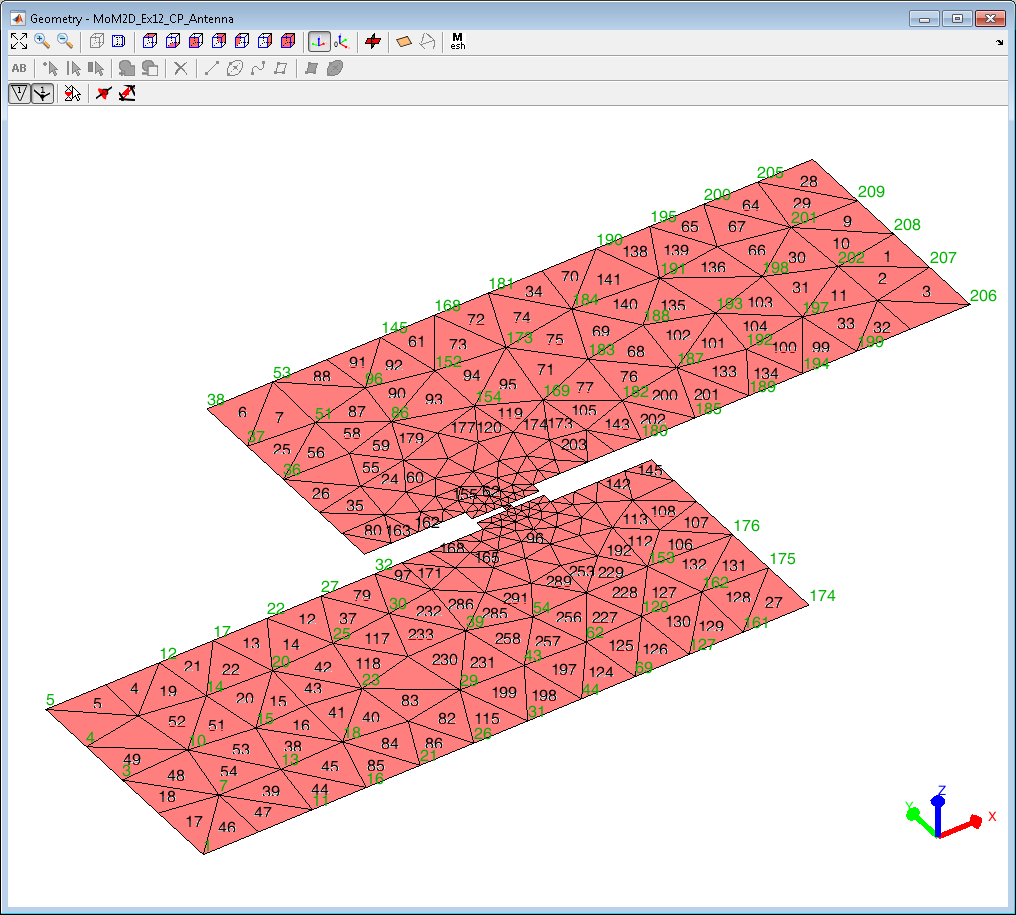About AToM
In recent years (since 2009), thousands of lines in Matlab have been written for the research carried out by the antenna group at the Department of Electromagnetic Field at CTU in Prague. These codes utilize current theoretical findings and present a unique electromagnetic software tool based on Method of Moments (MoM) [1] solver. Importantly, this well-known computational basis is followed by modal decomposition of radiation sources
which is accomplished mainly with the help of the Theory of Characteristic Modes (CM) [2-3].
Since such tool might be of interest for the broader scientific community and since most universities and researchers use the Matlab platform, our codes will be embeded into a user-friendly pack as a Matlab toolbox named Antenna Toolbox for Matlab (AToM). In connection with team from VUT Brno and our commercial partner MECAS ESI, the AToM project received funding for 2014 - 2017 from the Technological Agency of Czech Republic.
The existing codes have already been used in the teaching process and also for conducting research on electrically small antennas, fractal, diversity and reconfigurable antennas and related issues (radiation Q factor, radiation efficiency), see [4-8]. During the project, the codes are being revisited and enhanced to cover recent research on antenna theory. The screenshot below show an graphical interface (GUI) of the current version of AToM package, see also video on our Youtube channel.

The AToM is written entirely in Matlab, so the user will enjoy its semi open architecture and friendly operation through GUI or direct access to low level functions.
Main simulation core is based on Method of moments, both for 3D wire and planar structures. Together with modal decomposition (Characteristic modes [8]), the source concept [9-12], feeding synthesis and powerful optimization (FOPS optimizer), it will present unique tool for syntesis of antennas. Full list of AToM features is available here. See also AToM's picture gallery and AToM poster (pdf file).
References
[1] Harrington, R. F.. Field Computation by Moment Methods. John Wiley - IEEE Press, 1993.
[2] Harrington, R. F., Mautz, J. R.. "Theory of Characteristic Modes for Conducting Bodies," IEEE Trans. Antennas Propag., vol 19, no. 5, p. 622-628, 1971, http://dx.doi.org/10.1109/TAP.1971.1139999
[3] Cabedo-Fabres, M., Antonino-Daviu, E., Valero-Noguiera, A., Bataller, M. F., "The Theory of Characteristic Modes Revisited: A Contribution to the Design of Antennas for Modern Applications," IEEE Antennas Propag. Magazine, vol 49, no. 5, p. 52-68, 2007, http://dx.doi.org/10.1109/MAP.2007.4395295
[4] Capek, M., Hazdra, P., Eichler, J., Mazanek, M., "Software Tools for Efficient Generation, Modelling and Optimisation of Fractal Radiating Structures," IET Microw. Antennas Propag., vol 5, no 8, p. 1002–1007, 2011, http://dx.doi.org/10.1049/iet-map.2010.0269
[5] Eichler, J., Hazdra, P., Capek, M., Korinek, T., Hamouz, P., "Design of a Dual-Band Orthogonally Polarized L-Probe-Fed Fractal Patch Antenna Using Modal Methods," IEEE Antennas Wireless Propag. Lett., vol 10, p. 1389–1392, 2011, http://dx.doi.org/10.1109/LAWP.2011.2178811
[6] Capek, M., Hamouz, P., Hazdra, P., Eichler, J., "Implementation of the Theory of Characteristic Modes in Matlab," IEEE Antennas Propag. Magazine, vol 55, no. 2, p. 176–189, 2013, http://dx.doi.org/10.1109/MAP.2013.6529342
[7] Capek, M., Hazdra, P., Eichler, J., "A Method for the Evaluation of Radiation Q Based On Modal Approach," IEEE Trans. Antennas Propag., vol 60, no. 10, p. 4556–4567, 2012, http://dx.doi.org/10.1109/TAP.2012.2207329
[8] Capek, M., Hazdra, P., Eichler, J., Hamouz, P., Mazanek, M., Sobotikova, V, "The evaluation of total radiation Q based on modal approach," EuCAP 2012, http://dx.doi.org/10.1109/EuCAP.2012.6205873
[9] Capek, M., Hazdra, P., Masek, M., Losenicky, L., "Analytical Representation of Characteristic Modes Decomposition," IEEE Trans. Antennas Propag., vol. 65, no. 2, p. 713-720, Feb. 2017, https://doi.org/10.1109/TAP.2016.2632725
[10] Hazdra, P., Capek, M., Masek, M., Lonsky, T, "On Antenna Parameters Inferable from Sources,'' Radioengineering (Feature Article), vol. 2016, no. 1, p. 12-17, April 2016.
[11] Capek, M., Jelinek, L., ''Optimal Composition of Modal Currents For Minimal Quality Factor Q," IEEE Trans. Antennas Propag., vol. 64, no. 12, p. 5230-5242, Dec. 2016, https://doi.org/10.1109/TAP.2016.2617779
[12] Jelinek, L., Capek, M., "Optimal Currents on Arbitrarily Shaped Surfaces,'' IEEE Trans. Antennas Propag., vol. 65, no. 1, p. 329-341, Jan. 2017, https://doi.org/10.1109/TAP.2016.2624735





